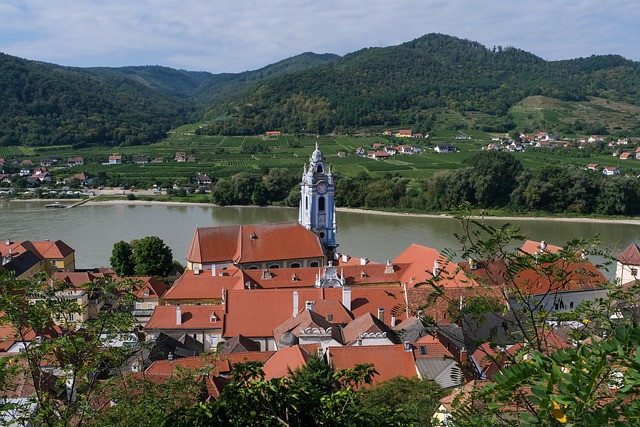Vignette Austria Through the Lens: Photography Tips for Capturing Beauty
Austria, a picturesque country in the heart of Europe, is a haven for photographers and nature enthusiasts alike. With its stunning alpine landscapes, charming villages, and rich cultural heritage, this nation offers a plethora of photography opportunities. Whether you’re an experienced photographer or a novice picking up a camera for the first time, capturing the essence of Austria requires a keen eye and the right techniques. This article will guide you on how to photograph Austria’s beauty effectively, from its majestic mountains to the vibrant streets of Vienna.
Understanding the Austrian Landscape
Austria’s diverse geography is one of its most striking features. The country boasts towering mountains, lush valleys, serene lakes, and historical architecture, each contributing to the landscape’s unique character. To effectively capture the beauty of Austria, it is essential to understand these different environments:
The Alps dominate the western part of the country, offering stunning backdrops for any photograph. The picturesque towns nestled in these mountains provide excellent opportunities for scenic and architectural photography. In contrast, the eastern regions feature rolling hills, vineyards, and rivers that reflect the changing light beautifully.
The Magic of Golden Hour
One of the most crucial aspects of photography is lighting. The golden hour, which occurs shortly after sunrise and before sunset, is an ideal time for capturing the stunning vistas of Austria. During this time, the soft, diffused light enhances colors and adds a warmth to landscapes that makes them truly breathtaking.
When shooting during the golden hour, consider the direction of the sunlight and how it interacts with the landscape. For instance, capturing a mountain range bathed in golden light can create an ethereal atmosphere, while the warm glow hitting a historical building allows for more dynamic and engaging compositions.
Incorporating Leading Lines
Leading lines are an essential compositional element that can elevate your photographs significantly. They guide the viewer’s eye throughout the image, creating a sense of depth and dimension. In Austria, leading lines can come from a variety of sources: winding roads in the Alps, pathways in gardens, or the architectural lines of historic buildings. Look for these elements to draw attention to the primary subject of your photograph.
For example, a winding path leading towards a majestic mountain can create a sense of journey and exploration, inviting viewers to imagine walking that path themselves. Similarly, using the lines of a bridge or railway can provide context and enhance the storytelling aspect of the shot.
Emphasizing Texture
Austria’s landscapes offer a phenomenal variety of textures, from the rocky surfaces of the Alps to the smooth surfaces of serene lakes. Capturing these textures can add an intriguing detail to your photos, giving them depth and richness. To emphasize texture, consider getting closer to your subject, focusing on details that showcase the natural elements and their interactions.
For example, photographing the rough bark of an ancient tree against the soft grass of a meadow can create a juxtaposition that draws the viewer in. Alternatively, shooting through leaves to capture sunlight filtering through can highlight the vibrancy of nature.
Finding Unique Perspectives
Austria is filled with iconic landmarks, but sometimes, photographing a well-known site from a different angle can reveal its hidden beauty. Experimenting with perspectives and composition can result in creative images that stand out.
Try capturing famous spots such as the Salzburg Fortress or Schönbrunn Palace from low angles or incorporating a framing element, like branches or arches, to create a more dynamic composition. Aerial shots from mountain peaks, particularly in locations like Zell am See or Lake Wolfgang, provide breathtaking views that are often missed from the ground.
Documenting Cultural Heritage
Austria is rich in history and culture, and documenting these aspects can lead to compelling photography. The architecture of cities such as Vienna, Innsbruck, and Graz tells stories of the past, blending influences from different eras. The ornate buildings, public squares, and traditional markets present opportunities to capture the essence of Austrian culture.
When photographing cultural sites, ensure that you pay attention to the details. Capturing ornate doorways, the texture of cobblestone streets, or the intricate designs of buildings adds depth and context to your images. Additionally, candid shots of local life, festivals, or traditional attire can convey a sense of vibrancy and authenticity in your portfolio.
Utilizing Reflections
Austria’s beautiful lakes and rivers create breathtaking reflections, particularly if you can time your shots with calm weather. Reflections can add symmetry and captivating elements to your photographs. Always be on the lookout for still water, as this is when reflections are at their best. The serene beauty of Lake Hallstatt, with its charming village nestled against the backdrop of the Alps, provides excellent opportunities to capture stunning mirrored images.
To create visually compelling reflections, consider using longer exposures during twilight or dawn when the light is soft and the colors are rich, resulting in dreamy images adorned with reflections.
Capturing Motion
Austria’s vibrant cities and natural landscapes are teeming with motion, whether it’s lively street scenes, bustling markets, or the gentle movement of water. Including elements of motion in your photography can bring energy and life to your images. To capture motion, use a faster shutter speed to freeze action, or a slower shutter speed to create a sense of movement.
For example, capturing the hustle and bustle of the Naschmarkt in Vienna can be more captivating with blurred people walking by, showing liveliness in the scene. Alternatively, using a slower shutter speed to photograph flowing waterfalls in places like the Krimml Falls gives a sense of the water’s power and grace.
Post-Processing Techniques
In photography, the magic often continues in the editing process. Post-processing helps enhance your images, allowing you to refine them by adjusting exposure, contrast, and colors. However, it’s essential to strike a balance; over-processing can detract from the authenticity of your photos. Use editing software judiciously to bring out the best in your shots while preserving the natural beauty of the scenery.
When editing images taken in Austria, consider the colors that represent the country’s beauty—vibrant greens of the meadows, deep blues of the lakes, and dramatic grays of the mountains. Enhancing these hues can help convey the true essence of the location.
Conclusion
Austria is a feast for the eyes, and its beauty offers countless opportunities for photography. From breathtaking landscapes to rich cultural scenes, the country is filled with moments waiting to be captured. By understanding the nuances of light, composition, and the unique features of Austria’s diverse environment, you can create stunning photographs that reflect the country’s enchanting charm.
Whether you seek to portray the dramatic Alps, the intricate details of Viennese architecture, or the lively spirit of Austrian culture, remember that the essence of great photography comes from not just seeing but experiencing the moments that unfold before you. With practice, patience, and a willingness to experiment, you can capture unforgettable images that reflect the true beauty of Austria through your lens.


